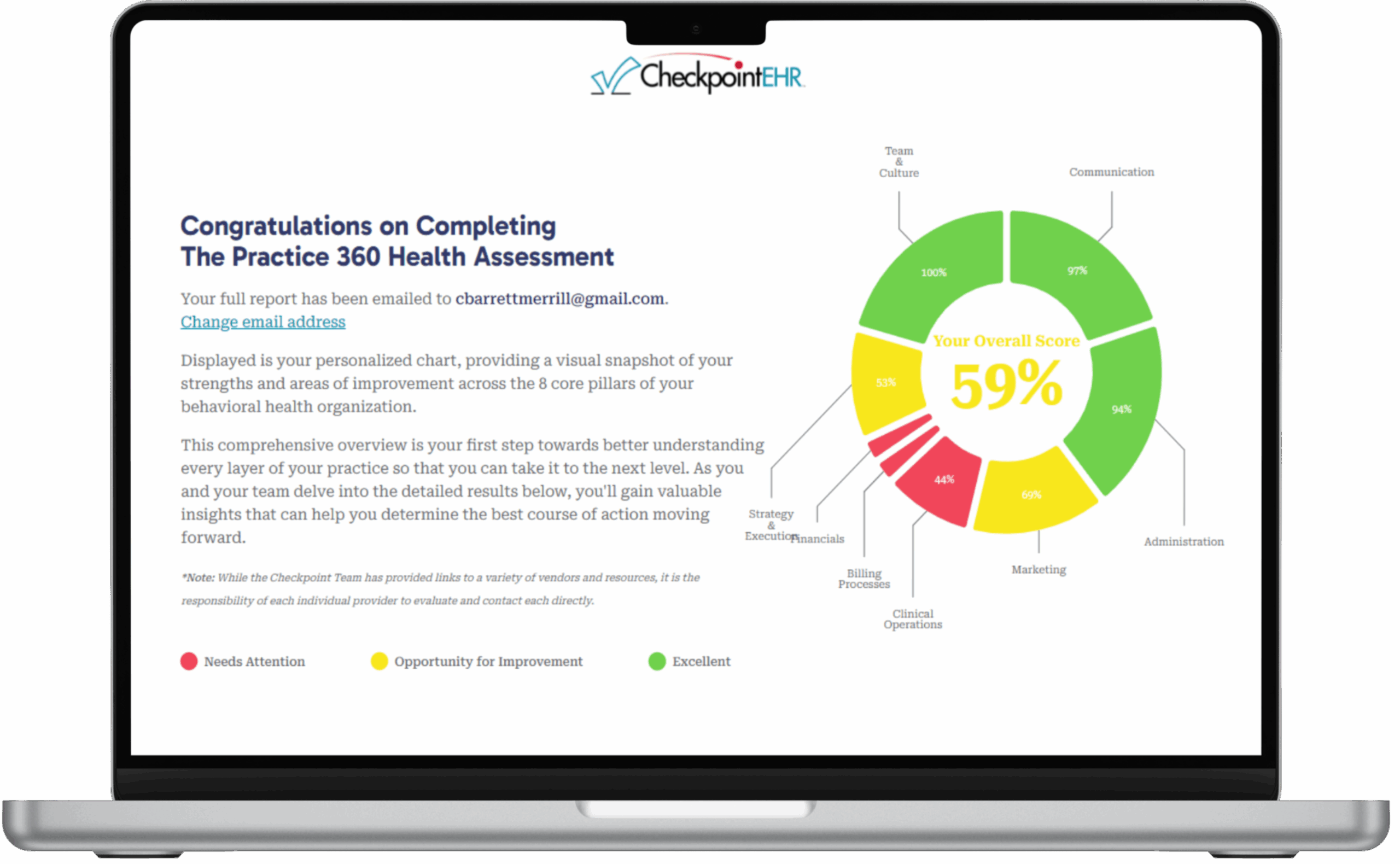The Pros and Cons of Accepting Medicaid

There are advantages and disadvantages to accepting Medicaid clients in a behavioral health practice. Many providers feel the disadvantages outweigh the advantages, but benefits do exist for the right practice. Here, we look at some of the main points to consider when evaluating whether to accept Medicaid.
Curious about your practice’s operational effectiveness and overall business health? Gain immediate clarity with our FREE, 5-minute Practice 360 Health Assessment. Discover hidden strengths, pinpoint areas for improvement, and unlock tailored insights to elevate your behavioral health organization.
Disadvantages of Medicaid
Lower reimbursements and reduced revenue
Every medical practice needs to make a profit to stay in business, but medical practices that have a large Medicaid patient base tend to be less profitable. One of the primary reasons for this is that Medicaid reimbursements are lower than those of commercial insurers for most procedures and treatments.
Since those who rely on Medicaid are by definition low earners, they are not going to be in a position to bring in additional revenue for a medical practice. They will have a decreased financial ability to opt for elective treatments, and they may not be able to pay for top brand drugs or other medical aids.
Another financial concern is that medical practices cannot charge a fee when Medicaid patients miss appointments. One 2007 study conducted by the Virginia Commonwealth University’s Department of Orthodontics over a 12-month period showed that almost twice as many Medicaid patients missed appointments as non-Medicaid patients—15.4 percent compared to 8.3 percent.1
2. Administrative overhead
Dealing with Medicaid patients introduces a significant administrative overhead. The level of documentation required for reimbursement is far greater than that required by commercial insurers. Additionally, there is a requirement for annual audits.
Pre-authorization requests delay the delivery of treatment. It is often necessary to make more appointments for Medicaid patients than for others. There can be complications with payments because patients on Medicaid may not fully understand their personal liability for medical fees.
These administrative overheads can impact how many patients a practice can accommodate and can reduce even further the net revenue obtained by treating Medicaid patients.
Advantages of Medicaid
1. Extensive patient base
Perhaps the biggest advantage to accepting Medicaid patients is the large potential patient base. In 2017, more than 73 million people were enrolled in Medicaid.1 That represents about 22 percent of the entire population, or almost one in four people in the U.S. That is a sizable potential patient base for any medical practice.
However, these figures cannot be directly interpreted to determine whether a practice should cater to Medicaid patients. Practices based in affluent neighborhoods, in which very few people will be eligible for Medicaid, will likely draw all their patients from those areas. There is not much incentive for practices in areas like these to cater for Medicaid patients.
On the other hand, if a practice is physically located in an area with a significant low-income population, it would not make business sense to try to build the practice by targeting non-Medicaid patients.
2. Medicaid can help get new practices established
For a newly launched medical practice, accepting Medicaid patients can be a way to quickly build up a patient base. It reduces the need to perform extensive marketing, something that is necessary for a practice targeting non-Medicaid patients.
Looking for more helpful resources? Check out our new Medicaid Resources for Behavioral Health Providers page today!


